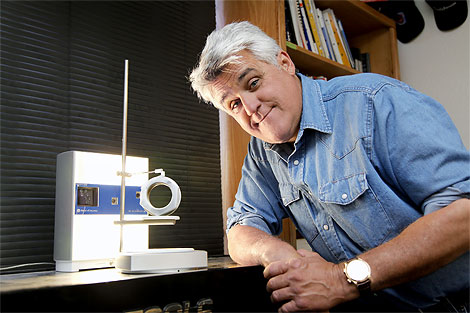Archive for the ‘Manufacturing Competitiveness’ Category
The Threshold Of Uncertainty
 Our threshold for uncertainty is too low.
Our threshold for uncertainty is too low.
Early in projects, even before the first prototype is up and running, you know what the product must do, what it will cost, and, most problematic, when you’ll be done. Independent of work content, level of newness, and workloads, there’s no uncertainty in your launch date. It’s etched in stone and the consequences are devastating.
A zero tolerance policy on uncertainty forces irrational behavior. As soon as possible, engineering gets something running in the lab, and then doesn’t want to change it because there’s no time. The prototype is almost impossible to build and is hypersensitive to normal process variation, but these issues are not addressed because there’s no time. Everyone agrees it’s important to fix it, and agrees to fix it after launch, but that never happens because the next project is already late before it starts. And the death cycle repeats project after project.
The root cause of this mess is the mistaken porting of manufacturing’s zero uncertainly mindset into design. The thinking goes like this – lean and Six Sigma have achieved magical success in manufacturing by eliminating uncertainty, so let’s do it in product design and achieve similar results. This is a fundamental mistake as the domains are fundamentally different.
In manufacturing the same product is made day-in and day-out – no uncertainty; in product design no two product development efforts are the same and there’s lots of stuff that’s done for the first time – uncertainty by definition. In manufacturing there’s a revision controlled engineering drawing that defines the right answer (the geometry and the material) – make it like the picture and it’s all good; in product design the material is chosen from many candidates and the geometry is created from scratch – the picture is created from nothing. By definition there’s more inherent uncertainty in product design, and to tighten the screws and fix the launch date at the start is inappropriate.
Design engineers must feel like there’s enough time to try new things because new products that provide new functionality require new technologies, new materials, and new geometries. With new comes inherent uncertainty, but there are ways to manage it.
To hold the timeline, give on the specification and cost. Design as fast as you can until you run out of time then launch. The product won’t work as well as you’d like and it will cost more than you’d like, but you’ll hit the schedule. A good way to do this is to de-feature a subassembly to reduce design time, and possibly reduce cost. Or, reuse a proven subassembly to reduce design time – take a hit in cost, but hit the timeline. The general idea – hold schedule but flex on performance and cost.
It feels like sacrilege to admit that something’s got to give, but it’s the truth. You’ve seen how it goes when you edict (in no uncertain terms) that the timeline will be met and there’ll be no give on performance and cost. It hasn’t worked, and it won’t – the inherent uncertainty of product design won’t let it.
Accept the uncertainty; be one with it; and manage it. It’s the only way.
Moving From Kryptonite To Spinach
 With websites, e-books, old fashioned books, Twitter, LinkedIn, Facebook, and blogs, there’s a seemingly limitless flood of information on every facet of business. There are heaps on innovation, new product development, lean, sales and marketing, manufacturing, and strategy; and within each there are elements and sub elements that fan out with multiple approaches.
With websites, e-books, old fashioned books, Twitter, LinkedIn, Facebook, and blogs, there’s a seemingly limitless flood of information on every facet of business. There are heaps on innovation, new product development, lean, sales and marketing, manufacturing, and strategy; and within each there are elements and sub elements that fan out with multiple approaches.
With today’s search engines and bots to automatically scan the horizon, it’s pretty easy to find what you’re looking for especially as you go narrow and deep. If you want to find best practices for reducing time-to-market for products designed in the US and manufactured in China, ask Google and she’ll tell you instantly. If you’re looking to improve marketing of healthcare products for the 20 to 40 year old demographic of the developing world, just ask Siri.
It’s now easy to separate the good stuff from the chaff and focus narrowly on your agenda. It’s like you have the capability dig into a box of a thousand puzzle pieces and pull out the very one you’re looking for. Finding the right puzzle piece is no longer the problem, the problem now is figuring out how they all fit together.
What holds the pieces together? What’s the common thread that winds through innovation, sales, marketing, and manufacturing? What is the backplane behind all this business stuff?
The backplane, and first fundamental, is product.
Every group has their unique work, and it’s all important – and product cuts across all of it. You innovate on product; sell product; manufacture product; service product. The shared context is the product. And I think there’s opportunity to use the shared context, this product lens, to open up design space of all our disciplines. For example how can the product change to make possible new and better marketing? How can the product change to radically simplify manufacturing? How can the product change so sales can tell the story they always wanted to tell? What innovation work must be done to create the product we all want?
In-discipline improvements have been good, but it’s time to take a step back and figure out how to create disruptive in-discipline innovations; to eliminate big discontinuities that cut across disciplines; and to establish multidisciplinary linkages and alignment to power the next evolution of our businesses. New design space is needed, and the product backplane can help.
Use the product lens to look along the backplane and see how changes in the product can bridge discontinuities across sales, marketing, and engineering. Use the common context of product to link revolutionary factory simplification to changes in the product. Use new sensors in the product to enable a new business model based on predictive maintenance. Let your imagination guide you.
It’s time to see the product for more than what it does and what it looks like. It’s time to see it as Superman’s kryptonite that constrains and limits all we do that can become Popeye’s spinach that can strengthen us to overpower all obstacles.
It’s All Connected
 There’s a natural tendency to simplify, to reduce, to narrow. In the name of problem solving, it’s narrow the scope, break it into small bites, and don’t worry about the subtle complexities. And for a lot of situations that works. But after years of fixing things one bite at a time, there are fewer and fewer situations that fit the divide and conquer approach. (Actually, they’re still there, but their return on investment is super low.) And after years of serial discretization, what are left are situations that cannot be broken up, that cut across interfaces, that make up a continuum. What are left are big problems and big situations that have huge payoff if solved, but are interconnected.
There’s a natural tendency to simplify, to reduce, to narrow. In the name of problem solving, it’s narrow the scope, break it into small bites, and don’t worry about the subtle complexities. And for a lot of situations that works. But after years of fixing things one bite at a time, there are fewer and fewer situations that fit the divide and conquer approach. (Actually, they’re still there, but their return on investment is super low.) And after years of serial discretization, what are left are situations that cannot be broken up, that cut across interfaces, that make up a continuum. What are left are big problems and big situations that have huge payoff if solved, but are interconnected.
Whether it’s cross-discipline, cross-organization, cross-cultural, or cross-best practice, the fundamental of these big kahunas is they cross interfaces. And that’s why they’ve never been attacked, and that’s why they’ve never been solved. But with payoffs so big, it’s time to take on connectedness.
For me, the most severe example of connectedness is woven around the product. To commercialize a product there are countless business process that cut across almost every interface. Here are a few: innovation, technology development, product development, robustness testing, product documentation, manufacturing engineering, marketing, sales, and service. Each of these processes is led by one organization and cuts across many; each cut across expertise-specialization interfaces; each requires information and knowledge from the other; and each new product development project must cooperate with all the others. They cannot be separated or broken into bits. Change one with intent and change the others with unintended consequences. No doubt – they’re connected.
Green thinking is much overdue, but with it comes connectedness squared. With pre-green product commercialization, the product flowed to the end user and that was about it. But with environmental movement there’s a whole new return path of interconnected business processes. Green thinking has turned the product life cycle into the circle of life – the product leaves, it lives it’s life, and it always comes back home.
And with this return path of connectedness, how the product goes together in manufacturing must be defined in conjunction with how it will be disassembled and recycled. Stress analysis must be coordinated with packaging design, regulations of banned substances, and material reuse of retired product. Marketing literature must be co-produced with regulatory strategy and recycling technologies. It’s connected more than ever.
But the bad news is the good news. Yes, things are more interwoven and the spider web is more tangled. But the upside – companies that can manage the complexity will have a significant advantage. Those that can navigate within connectedness will win.
The first step is to admit there’s a problem, and before connectedness can be managed, it must be recognized. And before it can become competitive advantage, it must be embraced.
Product Thinking

Product costs, without product thinking, drop 2% per year. With product thinking, product costs fall by 50%, and while your competitors’ profit margins drift downward, yours are too high to track by conventional methods. And your company is known for unending increases in stock price and long term investment in all the things that secure the future.
The supply chain, without product thinking, improves 3% per year. With product thinking, longest lead processes are eliminated, poorest yield processes are a thing of the past, problem suppliers are gone, and your distributers associate your brand with uninterrupted supply and on time delivery.
Product robustness, without product thinking, is the same year-on-year. Re-injecting long forgotten product thinking to simplify the product, product robustness jumps to unattainable levels and warranty costs plummet. And your brand is known for products that simply don’t break.
Rolled throughput yield is stalled at 90%. With product thinking, the product is simplified, opportunities for defects are reduced, and throughput skyrockets due to improved RTY. And your brand is known as a good value – providing good, repeatable functionality at a good price.
Lean, without product thinking has delivered wonderful results, but the low hanging fruit is gone and lean is moving into the back office. With product thinking, the design is changed and value-added work is eliminated along with its associated non-value added work (which is about 8 times bigger); manufacturing monuments with their long changeover times are ripped out and sold to your competitors; work from two factories is consolidated into one; new work is taken on to fill the emptied factories; and profit per square foot triples. And your brand is known for best-in-class quality, unbeatable on time delivery, world class performance, and pioneering the next generation of lean.
The sales argument is low price and good payment terms. With product thinking, the argument starts with product performance and ends with product reliability. The sales team is energized, and your brand is linked with solid products that just plain work.
The marketing approach is stickers and new packaging. With product thinking, it’s based on competitive advantage explained in terms of head-to-head performance data and a richer feature set. And your brand stands for winning technology and killer products.
Product thinking isn’t for everyone. But for those that try – your brand will thank you.
Engineering Will Carry the Day
 Engineering is more important than manufacturing – without engineering there is nothing to make, and engineering is more important than marketing – without it there is nothing to market.
Engineering is more important than manufacturing – without engineering there is nothing to make, and engineering is more important than marketing – without it there is nothing to market.
If I could choose my competitive advantage, it would be an unreasonably strong engineering team.
Ideas have no value unless they’re morphed into winning products, and that’s what engineering does. Technology has no value unless it’s twisted into killer products. Guess who does that?
We have fully built out methodologies for marketing, finance, and general management, each with all the necessary logic and matching toolsets, and manufacturing has lean. But there is no such thing for engineering. Stress analysis or thermal modeling? Built a prototype or do more thinking? Plastic or aluminum? Use an existing technology or invent a new one? What new technology should be invented? Launch the new product as it stands or improve product robustness? How is product robustness improved? Will the new product meet the specification? How will you know? Will it hit the cost target? Will it be manufacturable? Good luck scripting all that.
A comprehensive, step-by-step program for engineering is not possible.
Lean says process drives process, but that’s not right. The product dictates to the factory, and engineers dictate the product. The factory looks as it does because the product demands it, and the product looks as it does because engineers said so.
I’d rather have a product that is difficult to make but works great rather than one that jumps together but works poorly.
And what of innovation? The rhetoric says everyone innovates, but that’s just a nice story that helps everyone feel good. Some innovations are more equal than others. The most important innovations create the killer products, and the most important innovators are the ones that create them – the engineers.
Engineering as a cost center is a race to the bottom; engineering as a market creator will set you free.
The only question: How are you going to create a magical engineering team that changes the game?
You might be a superhero if…
- Using just dirt, rocks, and sticks, you can bring to life a product that makes life better for society.
- Using just your mind, you can radically simplify the factory by changing the product itself.
- Using your analytical skills, you can increase product function in ways that reinvent your industry.
- Using your knowledge of physics, you can solve a longstanding manufacturing problem by making a product insensitive to variation.
- Using your knowledge of Design for Manufacturing and Assembly, you can reduce product cost by 50%.
- Using your knowledge of materials, you can eliminate a fundamental factory bottleneck by changing what the product is made from.
- Using your curiosity and creativity, you can invent and commercialize a product that creates a new industry.
- Using your superpowers, you think you can fix a country’s economy one company at a time.
How To Accelerate Engineers Into Social Media
 Engineers fear social media, but shouldn’t. Our fear comes from lack of knowledge around information flow. Because we don’t understand how information flow works, we stay away. But our fear is misplaced – with social media information flow is controllable.
Engineers fear social media, but shouldn’t. Our fear comes from lack of knowledge around information flow. Because we don’t understand how information flow works, we stay away. But our fear is misplaced – with social media information flow is controllable.
For engineers, one-way communication is the best way to start. Engineers should turn on the information tap and let information flow to them. Let the learning begin.
At first, stay away from FaceBook – it’s the most social (non-work feel), least structured, and most difficult to understand – at least to me.
To start, I suggest LinkedIn – it’s the least social (most work-like) and highly controllable. It’s simple to start – create an account, populate your “resume stuff” (as little as you like) and add some connections (people you know and trust). You now have a professional network who can see your resume stuff and they can see yours. But no one else can, unless you let them. Now the fun part – find and join a working group in your interest area. A working group is group of like-minded people who create work-related discussions on a specific topic. Mine is called Systematic DFMA Deployment. You can search for a group, join (some require permission from the organizer), and start reading the discussions. The focused nature of the groups is comforting and you can read discussions without sharing any personal information. To start two-way communication, you can comment on a discussion.
After LinkedIn, engineers should try Twitter. Tweets (sounds funny, doesn’t it?) are sentences (text only) that are limited to 140 characters. With Twitter, one-way communication is the way to start – no need to share information. Just create an account and you’re ready to learn. With LinkedIn it’s about working groups, and with Twitter it’s about hashtags (#). Hashtags create focus with Twitter and make it searchable. For example, if the tweet creator uses #DFMA in the sentences, you can find it. Search for #DFMA and you’ll find tweets (sub-140 character sentences) related to design for manufacturing and assembly. When you find a hashtag of interest, monitor those tweets. (You can automate hashtag searches – HootSuite – but that’s for later). And when you find someone who consistently creates great content, you can follow them. Once followed, all their tweets are sent to your Twitter account (Twitter feed). To start two-way communication you can retweet (resend a tweet you like), send a direct message to someone (like a short email), or create your own tweet.
Twitter’s format comforts me – short, dense bursts of sentences and no more. Long tweets are not possible. But a tweet can contain a link to a website which points to a specific page on the web. To me it’s a great combination – short sentences that precisely point to the web.
With engineers and social media, the goal is to converge on collaboration. Ultimately, engineers move from one-way communication to two-way communication, and then to collaboration. Collaboration on LinkedIn and Twitter allows engineers to learn from (and interact with) the world’s best subject matter experts. Let me say that again – with LinkedIn and Twitter, engineers get the latest technical data, analyses, and tools from the best people in the world. And it’s all for free.
For engineers, social and media are the wrong words. For engineers, the right words are – controlled, focused, work-related information flow. And when engineers get comfortable with information flow, they’ll converge on collaboration. And with collaboration, engineers will learn from each other, help each other, innovate and, even, create personal relationships with each other.
Companies still look at social media as a waste of work time, and that’s especially true when it comes to their engineers. But that’s old thinking. More bluntly, that’s dangerous thinking. When their engineers use social media, companies will develop better products and technologies and commercialize them faster.
Plain and simple, companies that accelerate their engineers into social media will win.
On Independence
 Independence for a country is about choice. A country wants to be able to make choices to better itself, to control its own destiny. A country wants to feel like it has freedom to do what it thinks is right. Hopefully, a country thinks it’s a good to provide for its citizens in a long term sense. We can disagree what is best, but a good country makes an explicit choice about what it think is right and takes responsibility for its choices. For a country, the choices should be grounded in the long term.
Independence for a country is about choice. A country wants to be able to make choices to better itself, to control its own destiny. A country wants to feel like it has freedom to do what it thinks is right. Hopefully, a country thinks it’s a good to provide for its citizens in a long term sense. We can disagree what is best, but a good country makes an explicit choice about what it think is right and takes responsibility for its choices. For a country, the choices should be grounded in the long term.
Independence for a company is about choice. Like a country, a company wants control over its own destiny. A company wants to feel like it has freedom to do what’s right. A company wants to decide what’s right and wants the ability to act accordingly. There are lots of management theories on what’s right, but the company wants to be able to choose. Like it or not, the company will be accountable for its choices, as measured by stock price or profit.
And with children, independence is about choice. Children, too, want control over their own destiny, but they score low on the responsibility scale. And that’s why children earn responsibility over time – get a little, don’t get hurt, and get a little more. They don’t know what’s good for them, but don’t let that get in the way of wanting control over their own destiny. That’s why parents exist.
Independence is about the ability to choose. But there’s a catch. With independence comes responsibility – responsibility for the choice. With children, there’s insufficient responsibility because they just don’t care. And with employees in a company, there’s insufficient responsibility for another reason – fear of failure. I’m not sure about countries.
Independence is a two way street – choice and responsibility. And independence is bound by constraints. (There are unalienable rights, but unconstrained independence isn’t one of them.) For more independence, push hard on constraints; for more independence, take responsibility; for more independence, make more choices (and own the consequences).
Happy Independence Day.
Small Is Good, And Powerful
 If lean has taught us anything, it’s smaller is better. Smaller machines, smaller factories, smaller teams, smaller everything.
If lean has taught us anything, it’s smaller is better. Smaller machines, smaller factories, smaller teams, smaller everything.
The famous Speaker of the House, Tip O’Neill, said all politics are local. He meant all action happens at the lowest levels (in the districts and neighborhoods), where everyone knows everyone, where the issues are well understood, and the fundamentals are not just talked about, they’re lived. It’s the same with manufacturing. But I’m not talking about local in the geography sense; I’m talking about the neighborhood sense. When manufacturing is neighborhood-local, it’s small, tight, focused and knowledgeable.
We mistakenly think about manufacturing strictly as the process of making things—it’s far more. In the broadest sense, manufacturing is everything: innovation, design, making and service. It’s this broad-sense manufacturing that will deliver the next economic revolution.
Previously, I described how big companies break themselves into smaller operating units. They recognize lean favors small, and they break themselves up for competitive advantage. They want to become a collective of small companies with the upside of small without of the downside of big. Yet with small companies, there’s an urge to be big.
Lean says smaller is better and more profitable. Lean says small companies have an advantage because they’re already small. Lean says small companies should stay small (neighborhood small) and be more of what they are.
Small companies have a size advantage. Their smaller scope improves focus and alignment. It’s easier to define the mission, communicate it, and work toward it. It’s easier to mobilize the neighborhood. It’s clearer when things go off track and easier to get things back on track. At the lowest level, smaller companies zero in on problems and fix them. At the highest, they align themselves with their mission. These are important advantages, but not the most important.
The real advantage is deep process knowledge. Smaller companies have less breadth and more depth, which allows them to focus energy on the work and develop deep process knowledge. Many large manufacturers have lost process knowledge over the years. Small companies tend to develop and retain more of it. We’ve forgotten the value of deep process knowledge, but as companies look for competitive advantage, its stock is rising.
Lean wants small companies to build on that strength. To take it to the next level, lean wants companies to think about manufacturing in the more-than-making sense and use that deep process knowledge to influence the product itself. Lean wants suppliers to inject their process knowledge into their customers’ product development process to radically reduce material cost and help the product sprint through the factory.
The ultimate advantage of deep process knowledge is realized when small companies use it to design products. It’s realized when people who know the process fundamentals work respectfully with their neighbors who design the product. The result is deeper process knowledge and a far more profitable product. Big companies like to work with smaller companies who can design and make.
Tip O’Neill and lean agree. All manufacturing is local. And this local nature drives a focus on the fundamentals and details. Being neighborhood-local is easier for small companies because their scope is smaller, which helps them develop and retain deep process knowledge.
Lean wants companies to be small—neighborhood-small. When small companies build on a foundation of deep process knowledge, sales grow. Lean wants sales growth, but it also wants companies to reduce their size in the neighborhood sense.
Make It Where You Sell It
 Lean has rolled through our factories and generated profits at every turn. Now it’s time to get serious about savings and realize the next level of savings. Companies are pushing lean into the back office, but that won’t get it done. The savings will be good, but not great. After picking low-hanging factory fruit, there’s uncertainty around what’s next for lean.
Lean has rolled through our factories and generated profits at every turn. Now it’s time to get serious about savings and realize the next level of savings. Companies are pushing lean into the back office, but that won’t get it done. The savings will be good, but not great. After picking low-hanging factory fruit, there’s uncertainty around what’s next for lean.
Make it where you sell it, that’s next for lean. Like a central theorem, this simple phrase will become lean’s mantra, and it will change everything, including our organizations themselves. The big multi-national companies have already started their journey, and we can take our cues from them.
The major automakers have assembly plants on all continents – objective evidence of make it where you sell it. There are many benefits to make it where you sell it, but the top three are: speed, speed, speed. The automotive value stream without make it where you sell it: make a car, put it on a boat, deliver it to a dealer, and sell it. Make it where you sell it eliminates the boat: make it, deliver it, and sell it. Inventory is proportional to cycle time and eliminating the long boat ride shortens the value stream, improves response time and reduces inventory.
Make it where you sell it starts closest to the customer, and final assembly is the first to be established in-market. Engines and transmissions still ride the boat, but not for long. After final assembly, make it where you sell it targets big, heavy, expensive subassemblies, so expect in-market engine and transmission plants. (However, big ones like these may stay put for while due to technological, political, or cultural reasons.)
With one piece flow, right-sized machines, and short product runs, lean has taught us the most economic scale is far smaller than we’d imagined. We’ve learned for our factories smaller is better, and make it where you sell it extrapolates smaller-is-better to the organization itself. Here again, the big guys lead the way. Multinationals are breaking themselves into smaller units, right-sizing into smaller regional companies – still big, but smaller. Their in-country manufacturing creates nice tight feedback loops between customer and factory. And there’s an important benefit to the brand – it becomes a local brand. Not only can the brand better serve regional tastes, it provides goodwill in the form of jobs.
[Disclaimer: I don’t advocate outsourcing. I’m simply explaining the forces at work and their consequences.]
Lean cares about speed, not countries, and make it where you sell it causes jobs flow across company boarders. This is especiallylevant as countries compete for manufacturing jobs like their survival depended on them. For those countries that understand manufacturing jobs are the bedrock of a sustainable economy, make it where you sell it can be threatening. If you’re a country that doesn’t buy a lot of manufactured goods, you and your economy trouble – jobs will flow to where products are sold.
Make it where you sell it won’t stop at making, and will extend up stream. The next logical extension is design it where you sell it, R&D it where you sell it, and innovate it where you sell it. (The biggest companies are already doing this with regional R&D centers.) More jobs will flow across borders, but this time they’ll be the coveted thinking jobs.
Make it where you sell it is the guiding principle companies are using to become more responsive, more productive, and local. It has already broken the biggest companies into smaller ones. They’ve realized that the most economic scale is small, and they’re getting there using make it where you sell it.
Make it where you sell it will change all companies, even small ones. And the mantra for small companies: think narrow and deep.
I will hold a half-day Workshop on Systematic DFMA Deployment on June 13 in RI. (See bottom of linked page.) I look forward to meeting you in person.
Fix The Economy – Connect The Engineer To The Factory
 Rumor has it, manufacturing is back. Yes, manufacturing jobs are coming back, but they’re coming back in dribbles. (They left in a geyser, so we still have much to do.) What we need is a fire hose of new manufacturing jobs.
Rumor has it, manufacturing is back. Yes, manufacturing jobs are coming back, but they’re coming back in dribbles. (They left in a geyser, so we still have much to do.) What we need is a fire hose of new manufacturing jobs.
Manufacturing jobs are trickling back from low cost countries because companies now realize the promised labor savings are not there and neither is product quality. But a trickle isn’t good enough; we need to turn the tide; we need the Mississippi river.
For flow like that we need a fundamental change. We need labor costs so low our focus becomes good quality; labor costs so low our focus becomes speed to market; labor costs so low our focus becomes speed to customer. But the secret is not labor rate. In fact, the secret isn’t even in the factory.
The secret is a secret because we’ve mistakenly mapped manufacturing solely to making (to factories). We’ve forgotten manufacturing is about designing and making. And that’s the secret: designing – adding product thinking to the mix. Design out the labor.
There are many names for designing and making done together. Most commonly it’s called concurrent engineering. Though seemingly innocuous, taken together, those words have over a thousand meanings layered with even more nuances. (Ask someone for a simple description of concurrent engineering. You’ll see.) It’s time to take a step back and demystify designing and making done together. We can do this with two simple questions:
- What behavior do we want?
- How do we get it?
What’s the behavior we want? We want design engineers to understand what drives cost in the factory (and suppliers’ factories) and design out cost. In short, we want to connect the engineer to the factory.
Great idea. But what if the factory and engineer are separated by geography? How do we get the behavior we want? We need to create a stand-in for the factory, a factory surrogate, and connect the engineer to the surrogate. And that surrogate is cost. (Cost is realized in the factory.) We get the desired behavior when we connect the engineer to cost.
When we make engineering responsible for cost (connect them to cost), they must figure out where the cost is so they can design it out. And when they figure out where the cost is, they’re effectively connected to the factory.
But the engineers don’t need to understand the whole factory (or supply chain), they only need to understand places that create cost (where the cost is.) To understand where cost is, they must look to the baseline product – the one you’re making today. To help them understand supply chain costs, ask for a Pareto chart of cost by part number for purchased parts. (The engineers will use cost to connect to suppliers’ factories.) The new design will focus on the big bars on the left of the Pareto – where the supply chain cost is.
To help them understand your factory’s cost, they must make two more Paretos. The first one is a Pareto of part count by major subassembly. Factory costs are high where the parts are – time to put them together. The second is a Pareto chart of process times. Factory costs are high where the time is – machine capacity, machine operators, and floor space.
To make it stick, use design reviews. At the first design review – where their design approach is defined – ask engineering for the three Paretos for the baseline product. Use the Pareto data to set a cost reduction goal of 50% (It will be easily achieved, but not easily believed.) and part count reduction goal of 50%. (Easily achieved.) Here’s a hint for the design review – their design approach should be strongly shaped by the Paretos.
Going forward, at every design review, ask engineering to present the three Paretos (for the new design) and cost and part count data (for the new design.) Engineering must present the data themselves; otherwise they’ll disconnect themselves from the factory.
To seal the deal, just before full production, engineering should present the go-to-production Paretos, cost, and part count data.
What I’ve described may not be concurrent engineering, but it’s the most profitable activity you’ll ever do. And, as a nice side benefit, you’ll help turn around the economy one company at a time.

 Mike Shipulski
Mike Shipulski